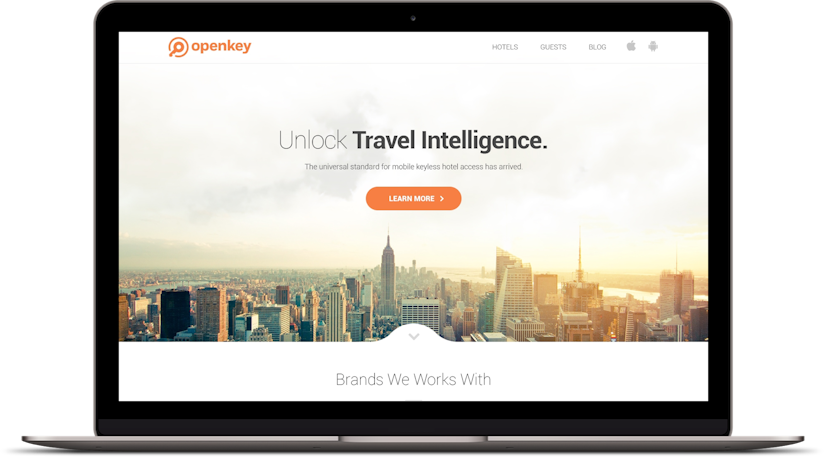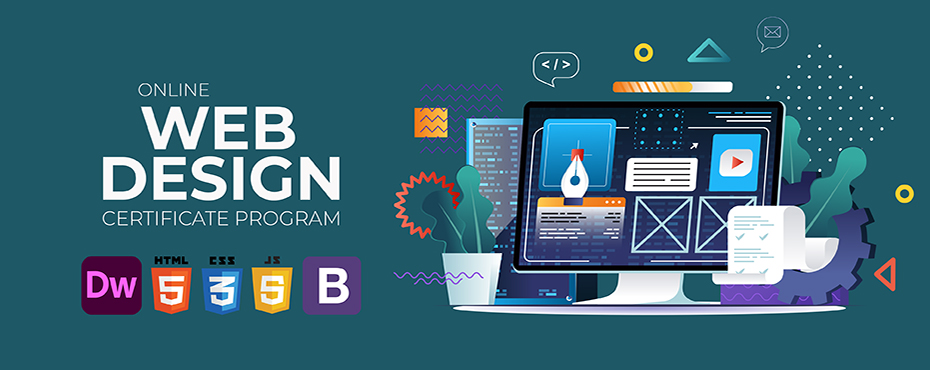All Categories
Featured
Table of Contents
- – Web Design Studio & Digital Marketing Agency •...
- – Webpage Design (Article) - Further Learning -...
- – Web Development Bachelor's Degree - Full Sail...
- – Pueblo Web Design Tips and Tricks:
- – Learn Responsive Design - Web.dev Tips and Tr...
- – Web Design Scholarship - Nyc Digital Marketin...
- – Web Design - Linkedin Learning, Formerly Lyn...
- – Web Developers And Digital Designers - Burea...
- – Web Design Definition - Techterms Tips and T...
- – Web Design - Entrepreneur Tips and Tricks:
- – Figma: The Collaborative Interface Design To...
Web Design Studio & Digital Marketing Agency • Gravitate Tips and Tricks:
Quick summary Use and the utility, not the visual style, determine the success or failure of a website. Considering that the visitor of the page is the only person who clicks the mouse and therefore decides everything, user-centric style has developed as a standard approach for successful and profit-oriented web design - web design frederick md.
and the utility, not the visual design, figure out the success or failure of a site. Because the visitor of the page is the only person who clicks the mouse and therefore chooses everything, user-centric design has ended up being a standard method for successful and profit-oriented website design. If users can't utilize a feature, it may as well not exist.
g. where the search box ought to be placed) as it has actually currently been carried out in a variety of short articles; rather we focus on the approaches which, used correctly, can result in more sophisticated design choices and streamline the process of perceiving provided information. Please notice that you may be thinking about the usability-related posts we have actually released prior to: Concepts Of Great Site Style And Effective Web Style Standards, In order to use the concepts correctly we first need to comprehend how users engage with websites, how they think and what are the basic patterns of users' behavior.
Webpage Design (Article) - Further Learning - Khan Academy Tips and Tricks:
Visitors look at each new page, scan a few of the text, and click the very first link that captures their interest or vaguely resembles the thing they're looking for. In fact, there are large parts of the page they don't even take a look at. Many users look for something fascinating (or useful) and clickable; as quickly as some promising candidates are discovered, users click.
If a page offers users with top quality content, they want to jeopardize the content with advertisements and the style of the site. This is the reason that not-that-well-designed sites with premium content gain a lot of traffic over years. Content is more crucial than the style which supports it.

Extremely easy concept: If a site isn't able to fulfill users' expectations, then designer stopped working to get his job done appropriately and the company loses cash. The higher is the cognitive load and the less intuitive is the navigation, the more prepared are users to leave the site and search for options.
Web Development Bachelor's Degree - Full Sail University Tips and Tricks:
Neither do they scan webpage in a linear style, going sequentially from one site section to another one. Rather users satisfice; they choose the first reasonable option. As quickly as they discover a link that appears like it might cause the goal, there is an excellent chance that it will be instantly clicked.
It doesn't matter to us if we understand how things work, as long as we can use them. If your audience is going to imitate you're creating billboard, then style excellent billboards." Users wish to have the ability to control their internet browser and count on the constant information presentation throughout the site.
If the navigation and site architecture aren't intuitive, the variety of question marks grows and makes it harder for users to comprehend how the system works and how to obtain from point A to point B. A clear structure, moderate visual ideas and easily recognizable links can help users to discover their course to their objective.
Pueblo Web Design Tips and Tricks:

claims to be "beyond channels, beyond items, beyond circulation". What does it indicate? Because users tend to check out sites according to the "F"-pattern, these 3 statements would be the first components users will see on the page once it is loaded. Although the design itself is basic and intuitive, to understand what the page has to do with the user requires to look for the response.
Once you have actually achieved this, you can communicate why the system works and how users can gain from it. People will not use your web site if they can't discover their method around it. 2. Don't Misuse Users' Persistence, In every task when you are going to use your visitors some service or tool, try to keep your user requirements minimal.
First-time visitors are ready to, not filling long web forms for an account they may never ever utilize in the future. Let users explore the site and discover your services without forcing them into sharing personal data. It's not reasonable to require users to go into an e-mail address to evaluate the function.
Learn Responsive Design - Web.dev Tips and Tricks:
Stikkit is a best example for an easy to use service which requires nearly nothing from the visitor which is inconspicuous and soothing. Which's what you desire your users to feel on your website. Apparently, Termite requires more. The registration can be done in less than 30 seconds as the form has horizontal orientation, the user doesn't even require to scroll the page.
A user registration alone is sufficient of an obstacle to user navigation to cut down on incoming traffic. Handle To Focus Users' Attention, As sites provide both fixed and dynamic material, some elements of the user interface draw in attention more than others do.
Focusing users' attention to particular areas of the website with a moderate use of visual components can help your visitors to receive from point A to point B without thinking of how it really is supposed to be done. The less enigma visitors have, the they have and the more trust they can develop towards the business the website represents.
Web Design Scholarship - Nyc Digital Marketing Agency Tips and Tricks:
4. Pursue Function Exposure, Modern web designs are generally criticized due to their technique of guiding users with aesthetically appealing 1-2-3-done-steps, big buttons with visual results etc. But from the style perspective these elements in fact aren't a bad thing. On the contrary, such as they lead the visitors through the website material in a really simple and easy to use way.
The website has 9 main navigation options which are visible at the very first glance. What matters is that the material is well-understood and visitors feel comfy with the method they engage with the system.
com gets directly to the point. No adorable words, no overemphasized statements. Rather a rate: just what visitors are searching for. An optimum service for reliable writing is touse short and succinct phrases (come to the point as quickly as possible), usage scannable design (classify the material, use several heading levels, use visual elements and bulleted lists which break the flow of consistent text blocks), usage plain and objective language (a promotion doesn't require to seem like ad; provide your users some reasonable and objective reason that they must use your service or remain on your site)6.
Web Design - Linkedin Learning, Formerly Lynda.com Tips and Tricks:
Users are hardly ever on a website to enjoy the design; additionally, in many cases they are looking for the info in spite of the style - web design frederick md. Make every effort for simpleness instead of complexity. From the visitors' point of view, the finest site design is a pure text, without any ads or more content blocks matching precisely the query visitors used or the content they've been searching for.
Finch plainly presents the details about the website and gives visitors a choice of alternatives without overcrowding them with unnecessary material. 7. Do not Be Afraid Of The White Space, Actually it's actually hard to overstate the importance of white area. Not only does it assist to for the visitors, however it makes it possible to perceive the details provided on the screen.
Complex structures are more difficult to read, scan, evaluate and deal with. If you have the option between separating 2 style sections by a noticeable line or by some whitespace, it's usually much better to use the whitespace solution. (Simon's Law): the much better you handle to provide users with a sense of visual hierarchy, the much easier your material will be to view.
Web Developers And Digital Designers - Bureau Of Labor ... Tips and Tricks:
The same conventions and rules must be applied to all elements.: do the most with the least amount of hints and visual components. 4 major indicate be considered: simplicity, clearness, distinctiveness, and focus. Simplicity includes just the elements that are essential for communication. Clearness: all elements should be developed so their significance is not ambiguous.
Conventions Are Our Buddies, Standard style of website elements does not result in a boring web site. As they decrease the finding out curve, the need to figure out how things work. For example, it would be a functionality nightmare if all sites had different visual presentation of RSS-feeds. That's not that various from our routine life where we tend to get utilized to basic concepts of how we organize information (folders) or do shopping (placement of products).
understand what they're anticipating from a site navigation, text structure, search placement etc. A common example from functionality sessions is to equate the page in Japanese (presuming your web users do not understand Japanese, e. g. with Babelfish) and supply your functionality testers with a job to discover something in the page of various language.
Web Design Definition - Techterms Tips and Tricks:
Test Early, Test Frequently, This so-called TETO-principle must be applied to every web design task as functionality tests frequently offer into significant issues and problems related to a provided design. Test not too late, not too little and not for the wrong factors.
Some essential points to remember: according to Steve Krug, and screening one user early in the job is better than screening 50 near completion. Accoring to Boehm's first law, errors are most frequent throughout requirements and style activities and are the more expensive the later they are gotten rid of.
That indicates that you create something, test it, fix it and then evaluate it again. There may be problems which have not been found throughout the very first round as users were virtually blocked by other problems.
Web Design - Entrepreneur Tips and Tricks:

This holds for designers as well. After you've worked on a website for few weeks, you can't observe it from a fresh point of view anymore. You know how it is constructed and for that reason you know precisely how it works you have the knowledge independent testers and visitors of your site would not have.
It can be connected to other areas such as graphic design, user experience, and multimedia arts, but is more aptly seen from a technological standpoint. It has actually ended up being a big part of people's everyday lives. It is hard to picture the Web without animated graphics, various designs of typography, background, videos and music.

Throughout 1991 to 1993 the World Wide Web was born. Text-only pages might be seen utilizing an easy line-mode browser. In 1993 Marc Andreessen and Eric Bina, created the Mosaic browser. At the time there were multiple browsers, nevertheless the bulk of them were Unix-based and naturally text heavy. There had actually been no integrated approach to graphic design aspects such as images or noises.
Figma: The Collaborative Interface Design Tool. Tips and Tricks:
The W3C was produced in October 1994 to "lead the Web to its full potential by establishing typical procedures that promote its advancement and ensure its interoperability." This prevented any one company from monopolizing a propriety web browser and programs language, which might have modified the impact of the Web as a whole.
As this has actually occurred the technology of the web has actually likewise moved on. There have actually likewise been significant modifications in the way individuals use and access the web, and this has actually altered how sites are created.
Learn more about Lovell Media Group LLC or TrainACETable of Contents
- – Web Design Studio & Digital Marketing Agency •...
- – Webpage Design (Article) - Further Learning -...
- – Web Development Bachelor's Degree - Full Sail...
- – Pueblo Web Design Tips and Tricks:
- – Learn Responsive Design - Web.dev Tips and Tr...
- – Web Design Scholarship - Nyc Digital Marketin...
- – Web Design - Linkedin Learning, Formerly Lyn...
- – Web Developers And Digital Designers - Burea...
- – Web Design Definition - Techterms Tips and T...
- – Web Design - Entrepreneur Tips and Tricks:
- – Figma: The Collaborative Interface Design To...
Latest Posts
Web Design Tools & Software - Webflow Tips and Tricks:
Beginner's Guide: How To Learn Web Design At Home - Medium Tips and Tricks:
Arch Web Design: Top-rated Web Design Agency For Saas ... Tips and Tricks:
More
Latest Posts
Web Design Tools & Software - Webflow Tips and Tricks:
Beginner's Guide: How To Learn Web Design At Home - Medium Tips and Tricks:
Arch Web Design: Top-rated Web Design Agency For Saas ... Tips and Tricks: